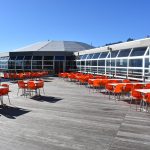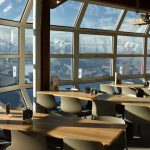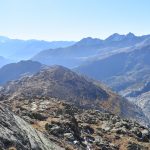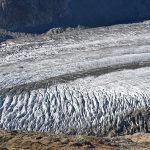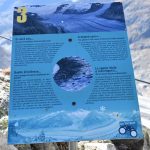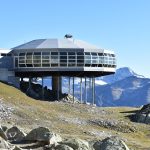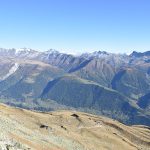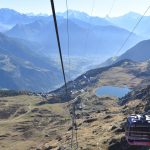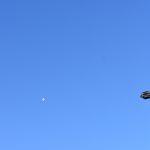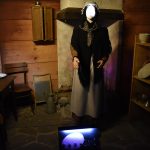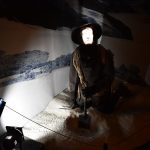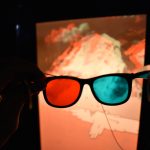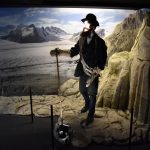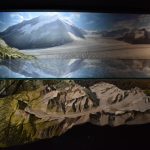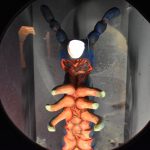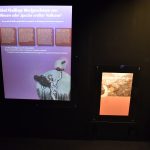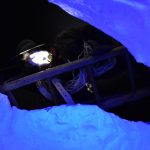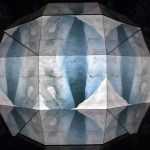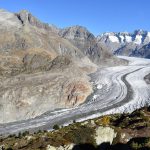As the UNESCO comments:
The extension of the natural World Heritage property of Jungfrau – Aletsch – Bietschhorn (first inscribed in 2001), expands the site to the east and west, bringing its surface area up to 82,400 ha., up from 53,900. The site provides an outstanding example of the formation of the High Alps, including the most glaciated part of the mountain range and the largest glacier in Eurasia. It features a wide diversity of ecosystems, including successional stages due particularly to the retreat of glaciers resulting from climate change. The site is of outstanding universal value both for its beauty and for the wealth of information it contains about the formation of mountains and glaciers, as well as ongoing climate change. It is also invaluable in terms of the ecological and biological processes it illustrates, notably through plant succession. Its impressive landscape has played an important role in European art, literature, mountaineering and alpine tourism.
少女峰–阿雷奇冰河–毕奇霍恩峰: 自然世界遗产少女峰–阿雷奇冰河–毕奇霍恩峰(最早于2001年被列入)从东部扩展到西部,面积从53 900公顷扩展到82 400公顷。该遗址为阿尔卑斯高山——包括山脉最受冰河作用的部分和欧亚大陆山脉最大的冰川——的形成提供了一个杰出的实例。它以生态系统多样性为特点,包括特别受气候变化冰川融化而形成的演替阶段。该遗址因景色秀美、而且包含山脉和冰川形成以及正在发生的气候变化方面的丰富知识而具有突出的全球价值。在它尤其通过植物演替所阐释的生态和生物过程方面,该遗址的价值无法衡量。其令人难忘的景观在欧洲艺术、文化、登山和阿尔卑斯山旅游中起着重要作用。
The content following this paragraph till the horizontal line above Chapter 1 is the same as written at the beginning of the first of the three posts (“Swiss Alps Jungfrau-Aletsch-Bietschhorn <1/3> – Viewpoint Moosfluh”) about Swiss Alps Jungfrau-Aletsch-Bietschhorn region. It mainly focuses on the various values of this area (why this region has been inscribed in the UNESCO World Heritage list), the highlights of visiting the three viewpoints, some basic facts or knowledge about Aletsch glacier, a brief introductuion of my own visit to Aletsch Arena in autumn 2017, and some practical information such as the schedule, timetables, prices of the cable cars and some special deals within this Arena. If you have already read my first post “Swiss Alps Jungfrau-Aletsch-Bietschhorn – Viewpoint Moosfluh“, please jump directly to the beginning of Chapter 1 below the horizontal line.
In general, this protected area is like a natural school, teaching all its admirers about biology, geology and ecology. From the glacial features to the formation of the high Alps, from the diversity of flora and fauna to the demonstration of global climate change, from the amazing mountain scenery to the developed tourism, Swiss Alps Jungfrau-Aletsch-Bietschhorn is undoubtedly an area that one should visit at least once in a life time.
Whether you are a geologist, a biologist or simply a traveller, you will be deeply attracted by this area, not only because of its beauty, but also because of the knowledge it possesses. Do you know what the classical glacial features are? Do you know how and when the high Alps were formed? Can you recognize the diverse flora and fauna here? All the puzzles in your mind related to glacier and the high Alps will be answered here.
In fact, as early as 20 to 40 million years ago, the precesses of uplift and compression formed the Alps. The impressive north wall made up of the high Alps such as Jungfrau, Mönch and Eiger would surely attract your attention once you’re at the viewpoint Eggishorn (the third and highest viewpoint of the three I’m gonna mention). These three high mountains, together with some other above-four-thousand-meter mountains make this area one of the most spectacular mountains regions in the Alps or even in the world. During millions of years, Aletsch glacier has “designed and constructed” many geomorphological features such as U-shaped glacier valleys, cirques, horn peaks, valley glaciers and moraines. From the three viewpoints I’m gonna write about, you will be able to see all these masterpieces created by nature. Another contribution that Aletsch glacier made is to the research of alpine and subalpine plant colonization and succession as well as to the research of global climate change. Because of the difficulty to access by the general public, a variety of ecosystems have evolved with little human intervention. A diversity of flora and fauna is represented in a range of habitats. With the retreating of the glacier, new substrates appear and the colonization of new plants also demonstrates an outstanding example of plant succession. Last but not least, the varying rates of the retreating of Aletsch glacier testify to not only to the history but also to the ongoing process of the global phenomenon – climate change.
Having said so much, I guess now you understand why this area has been inscribed to the UNESCO World Heritage list. As I mentioned above, there are three viewpoints to look the glacier and the surrounding high mountains. You must be wondering is it necessary to go to all the three viewpoints? My answer is yes, because only in this way can you have a full pictures from the beginning to the ending of the glacier. The glacier is 22.6 km long and takes up 81.7 square kilometers. If you wanna have a full image of the whole glacier, then I’m afraid you will have to stand on a mountain which is more than 5 km high. Unfortunately, there’s no mountain like this in whole Europe, let alone in this region. According to my experience, from the three different viewpoints, the view is rather different, not only of the glacier but also of the surrounding environment. The three different viewpoints are close to the mountain stations of Moosfluh (2333m), Bergstation Bettmerhorn (2647m) and Bergstation Eggishorn (2869m), from where you will not only see different parts of the glacier but also the change of vegetation.



The three pictures shown above are the views of the Aletsch glacier from the three viewpoints. Can you see the difference? Actually, when I said I suggested you visit all the three viewpoints, I wanted you not only to have a complete image of the glacier but also a complete experience or knowledge. Do you know what I mean? Well, for me, traveling is not only an experience of appreciating what’s beautiful but also a process of learning and studying. We always admire the people who have travelled around the whole world, but if they have only seen the world without knowing about it, would we still admire them? Now let’s come back to the Aletsch Arena and see how you can have a complete experience.
As I said in the previous paragraph, there are in total three viewpoints. On your way to the first viewpoint Moosfluh, close to the connecting cable car station Riederalp (middle station), there is the Villa Cassel, originally a summer residence for the London banker Sir Ernest Cassel, now the headquarter of the Pro Natura Center Aletsch. Located next to it is the Alpine garden and from these two places, you will learn a lot about the Aletsch Forest, including various animals and plants. When you are at the second viewpoint 5 minutes away from Bergstation bettmerhorn, the info boards there will reveal to you a lot of secrets about the glacier. What you should also NOT miss here is the Exhibition “Glacier World Bettmerhorn”, in which with the help of interactive figures and tablets, 3-D images, information boards and models, you will soon become an “expert” of the glacier. The third viewpoint is located right next to the Bergstation Eggishorn. Being the highest viewpoint of the three, you can see easily on a sunny day the origin of the glacier – Jungfrau towards north as well as Mönch and Eiger. Towards south you will see clearly Monte Rosa massif, Matterhorn and Weisshorn. If you are fit and are not afraid of height, try to hike to the top of Eggishorn. It takes around 20 mins to hike there but please remember to wear comfortable hiking shoes. You wouldn’t want to miss such an precious moment of turning around and seeing all the famous mountains in Switzerland. If you are lucky, you can even get a glimpse of Mont Blanc.

Before starting our adventure, let’s learn some facts about the glacier as well as its surroundings.
- Surface: 81.7 km2
- Length: 22.6 km
- Depth: 900 m (the deepest or thickest part)
- Weight: 27 billion tons
- The glaciers of Aletsch, Jungfrau, Ewigschneefäld and Grünegg join together at the Konkordia Square and become the Great Aletsch Glacier.
- The glacier actually flows but is invisible to our eyes. At Konkordia Square the velocity is around 200 m/year while at the altitude of Bettmerhorn it reaches 80-90 m/year. The glacier doesn’t flow steadily and different parts also flow at different speeds. That’s how the glacier crevasses occur. Research shows that due to frictional resistance, the flow slows down on sides and underneath.
- On a hot summer, 60 cubic meters of water can leave the mouth of the glacier in one second and that’s 60 thousand liters of water per second! The glacier can diminish by 20 cm in thickness on a hot summer day and in one year, it can diminish by 12 meters. However, due to other factors, the actual number is smaller.
- If the whole glacier melts , the amount of water will be enough for each person in the world to have one liter per day for six years. The weight of the glacier is 27 billion tons, which is equal to the weight of 72.5 million Boeing-747 planes.
- In 10 years, 1 m of fresh snow is converted into 1 cm of glacial ice.
- Have you ever seen a glacier table before? It is formed by a large stone supported by a glacial column, the cooperation of the glacier and the sun.
- Have you ever wondered that in the world of glacial ice, are there living creatures? The answer is yes. The 1.5-2.5 mm long glacier fleas live on the glacier all year round and have a life span of around 3 years. They can survive up to -20 °C but can’t live when the temperature is higher than +10-12 °C.
Do you think these are interesting facts about the glacier? If so, I strongly recommend you visiting the multimedia exhibition “Glacier World Bettmerhorn” at Bettmerhorn. There you will learn much more in a more interactive way. In the following paragraph, I’ll give you a brief general introduction of my trip to the Aletsch Arena as well as some general information about visiting the three viewpoints. Afterwards, in three separate posts I’m gonna explain and introduce to you in detail my experiences and opinions of the three viewpoints.
This time, I spent in total 2 days plus one night in the Aletsch Arena and I simply fell in love with it. What an amazing area and I can assure you it’s absolutely NO less attractive than Zermatt or Jungfraujoch. If your condition permits, I suggest you spend three days here enjoying the three viewpoints, hiking, visiting the exhibitions, tasting the local products and watching the starry nights. Fortunately, when I was there in the Aletsch Arena they had the “attractive autumn sun deals” which includes 1) cableway tickets to all three Aletsch Arena viewpoints, 2) a meal, 3) train tickets (MGBahn Mörel – Betten Talstation – Fiesch – Fürgangen and 4) a range of sport and cultural activities. The deal is only valid from 18th September to 22nd October 2017 for viewpoints Moosfluh and Bettmerhorn and from 23rd October to 29th October 2017 for viewpoint Eggishorn. Please click here to read more about the prices (for an adult with half-price card it costs only 39 CHF) and other information about the package. If this deal is almost or already finished when you see my post, please click here to visit the official website of Aletsch Arena to check out some more attractive deals.
- If you wanna know about the schedule of the cable cars to the three viewpoints please click here.
- If you wanna know about the timetables of the cable cars to the three viewpoints please click here. (Please note that the schedule and timetables of the cable cars are different in Summer and Winter seasons)
- If you wanna know about the prices of the cable cars to the three viewpoints please click here. (Please note that there are various kinds of tickets available tailored to your needs. For example, there are single trip tickets, multiple-ride tickets, Aletsch+ hiking pass (a combined cableway and train ticket giving you unlimited travel in the Aletsch Arena. 1-day to 21-day tickets are available), one-day deals, group offers etc.).
- Anyway, all the information you need to plan your trip is on the official website of Aletsch Arena. If you have any questions please don’t hesitate to contact me or to contact the Aletsch Arena directly.
Now Let’s start our journey to the second viewpoint – Bettmerhorn.
1. General introduction of my visit to Bettmerhorn
Actually, I was really struggling while choosing the featured picture for this post because so many beautiful pictures were taken during my visit to Bettmerhorn. If you love photography, you have to take this route and read this post carefully because I’m gonna recommend you some nice spots for photo shooting. Once getting off your cable car you will see a big billboard telling you what to do or what the attractions around the Bergstation Bettmerhorn are. As I mentioned by the end of the previous post, the highlights during this trip to Bettmeralp and Bettmerhorn are the viewpoint next to the Bergstation Bettmerhorn, the exhibition “Glacier World Bettmerhorn”, the dusk and dawn of the village Bettmeralp and its wonderful starry night. Below, the seven pictures were taken from the afternoon I went to Bettmerhorn viewpoint to the dusk, night and dawn that I spent in the village Bettmeralp. Intrigued? Let’s start our adventure now!







2. Viewpoint next to Bergstation Bettmerhorn




From this viewpoint, you will be able to see the middle section of the Aletsch glacier and I believe you can easily notice the difference of vegetation around here from Bettmeralp. This is because the altitude has changed from 1950 m to 2647 m. The reason why I tried avoiding calling this viewpoint the Bettmerhorn viewpoint is that the cable car terminal station that you get off at is not located on the top of Bettmerhorn. Instead, if you really wanna reach the the summit, you still need to do some hiking for around half an hour. Is it worth it? This mountain path has been given the name of a UNESCO ridgeway so I assume the experience must be unforgettable. Besides, the actually Bettmerhorn viewpoint is at an altitude of 2858 m, almost as high as the viewpoint close to Berstation Eggishorn. Unfortunately, because of the time limit I didn’t make it to the top this time. That’s why I said you should probably plan three days here exploring the three viewpoints in Aletsch Arena. I guess I will have to leave this opportunity for my next visit.
When you are standing on the panorama viewing platform, please take a look at the eight info boards on your left hand side. These eight info boards together with the exhibition “Faszination Aletschgletscher” make this viewpoint the most educational of the three. A large part of all my understanding and knowledge of the Aletsch glacier came from here. If you have read about the “facts about the glacier” part above or in the first post, it’s time for a little test. Do you know how many years and how much fresh snow it took to form 1 cm of glacial ice? You probably know that the glacier flows but do you know at what speed? Does it flow at the same speed in different sections? What does medial moraine mean? How is it formed and can you spot it or them on the Aletsch glacier? Where is the thickest part of the glacier and how thick is it?Do you know how it is measured? What is crevasse and how is it (or are they) formed in the glacier? Can you spot them? Can you spot the “magic table” on the glacier and do you know how it is formed? Are there living creatures on or in the glacier? How much do you know about them? Has the glacier only been retreating or is expanding also part of its history? You can find all the answers at the viewpoint Bergstation Bettmerhorn or if you are eager to solve most of the questions you can read the “facts about the glacier” part again or contact me directly. If you have got all the questions right then I really want to congratulate you for your “expertise” in the glacier.
On the wooden pavement from the cable car station Bettmerhorn to the viewpoint, I’m sure you will notice on your left hand side a broad terrace equipped with huge wooden chairs and a strange stone “artwork”. This is the “Ice Terrace“, a perfect place for relaxation. The strange stone “artwork” marks the energy spot “Harmony”, a spot for meditation. Actually I saw a few energy spots like this located at different viewpoints. They are usually marked with eye-catching, specially designed stone objects and an info board with an explanation and meditation instructions. Whether you believe in meditation or not, why not simply trying it out? It won’t do you any harm anyway. Lying on the huge wooden chairs is another “activity” that you have to do here. Can you imagine? Lying on a wooden chair (or you can call it bed if you like) at an altitude of 2647 m, surrounded by numerous snowy mountains and the greatest glacier of the Alps, accompanied only by the mountains birds and maybe a few other hikers, what more would you desire at this precious moment? Don’t forget to apply some sun cream and the time the last cable car going down to Bettmeralp though.
3. Exhibition “Glacier World Bettmerhorn” (Faszination Aletschgletscher)



This exhibition is another place to enhance your knowledge or experience of the Aletsch glacier region. The exhibition hall is very close to the Bergstation Bettmerhorn and as long as you follow the signs you will find it in less than 5 mins. I strongly recommend this place and even highlight it in my visit because it’s different from the info points (info boards) or books or brochures about the glacier. This special exhibition actually invites you into the glacier world and guides you step by step in the exploration and discovery of its secrets, mysteries and magic. The whole setting of the exhibition brings you back to the second half of the 19th century, introducing you to the researchers and tourists from that period of time. You will have the opportunity to “meet” the legendary old widow Schmidja, or even a glacier flea. The exhibition is open all year around and is free of charge. What else can stop your desire for knowledge then?
To be honest, when I first entered the exhibition, I was a bit shocked, confused and scared. The general lighting in the hall was rather dark and I saw a real-life figure with bright projection on his face. I was shocked when he all of a sudden started talking. After exploring a few rooms and passing through a few figures I came to realize the structure of the exhibition. Basically each room features a different topic and the “person” in this specific room welcomes you and invites you to explore a specific theme with him or her. You can press the button in front of the “person” to choose the language that he or she speaks (German, French, Italian and English) and listen to his or her introduction. You can also read more information on the info boards, on the interactive screens, or look at the 3-D pictures with 3-D glasses. There are also models and other assisting equipments and I can assure you this learning experience is fun! Having learnt everything on the brochures or from the info points close to the viewpoint? Here’s something new for you here. How does a glacier come to exist? How many liters of water does this glacier contain? Is the glacier flea really a flea? Are erratic boulders projectiles from giants or discharge from ancient volcanoes? What secrets is the glacier hiding? You will find the answers to all the questions here in this exhibition.
One more thing I like about this exhibition is how statistics of the glacier are compared to the statistics of objects that we are familiar with in our daily life. For example, the amount of water stored in the glacier is approximately equivalent to the volume of Lake Lucerne and that much water could supply all the people in the world one liter of water everyday for six years; the weight of the glacier is equivalent to the weight of more than 250,000 Eiffel Towers; on a hot summer day, around 6000 liters of water leave the glacier’s cave mouth every second, which is the same as 5000 bunches of 12 one-liter bottles per second. These comparisons make what the numbers mean more familiar to us and only in this way will we be astonished by the greatness of Aletsch glacier.
Close to the exhibition center and around the cable car station are some gondolas designed as children’s playground. If you feel tired after visiting the viewpoint, the exhibition or the summit of Bettmerhorn, you can always have some coffee, sweets, or delicious meals ether in the restaurant (by the end of it close to the WC there is an ice-room with a multimedia show) or on the terrace. Don’t forget to check when the last cable car goes down because if you miss it you will have to walk down for more than 1.5 hours. Now follow me and let’s explore the lovely village – Bettmeralp at an altitude of 1950 meters.
4. Village Bettmeralp



In my imagination, only the Swiss villages in the Alps are the authentic villages. The old wooden chalets surrounded by numerous snowy mountains, the green hills with sheep and cows, the sound of the stream and the ringing of the bells of the chapels, everything seems to coexist in harmony, peace and happiness. This time I had the opportunity to live in a chalet hotel called “Alpfrieden” in Reideralp, located 1950 meters above the sea level. All I can say is that it felt like a dream come true. From sunset to sunrise, from the chalet to the chapel, from the beautiful view to the delicious food, I fell in love with this village deeply. What you should absolutely not miss here is the chapel called “St. Maria zum Schnee (St. Maria to the snow)”, one of the most photographed chapels in Switzerland. Why has it gained such a reputation? Please take a look at the pictures below and I believe you will soon understand.





The five pictures of the chapel shown above were taken during different periods of time. Can you tell when? From the afternoon to the dusk of the first day, till the dawn of the next morning when the first sunlight shined on the chapel and at last, till the noon when I left Bettmeralp. I don’t know whether it’s because of the design of the chapel or its surroundings, the pictures just appears to be so harmonious and peaceful. In my opinion, taking a picture from this angel of the church seems to be the best option. I tried to take pictures of it from all around but I believe that the best spot is on the main road of the village close to the intelligent viewing telescope but if you go lower, the proportion just doesn’t seem right. Of course, everyone has his or her own definition of beauty and this is only my personal suggestion. If you have found a better position maybe you can give me a hint? I’d love to include Matterhorn and Weisshorn in the background but then in that case, only one side of the chapel can be included in the picture.
Another surprise for me during my stay was the starry night in this village. Except staying next to the Namu Lake in Tibet, which is more than 4000 meters above sea level, I have never seen a more alluring starry night than this one here in Bettmeralp. I suggest you go somewhere off the main street and village center because the road and house lights could affect your view of the stars. One pity is that it was impossible to take a nice picture of the chapel under the starry sky. The main reason is that it was very well lighted and once it’s in the picture, no stars could be seen. I guess only photoshopping can combine these two beautiful features together. Please check the pictures below to see whether the starry night meets your expectations.




Last but not least, I’d like to talk a bit more about the hotel Alpfrieden that I stayed for the night. It located very close to the village center and the rooms there are of typical, authentic Swiss chalet style. I stayed in a room with a balcony facing the east and in the morning I could feel the warmth of the first sunlight entering the village. Besides the furnishing and view of the room, I loved the dinner here. The main course was Lamb steak and at the beginning I was a bit hesitant because I don’t really eat lamb and I don’t really like 50% cooked meat. However, with some honey sauce heated by the candle light, the dish was just amazing. So tender, so rich in flavor and so juicy. I also cook at home and sometimes write my recipes but I know for sure that I couldn’t never make something like this.





In the morning after my breakfast, I went to the viewpoint close to the Bergstation Bettmerhorn again and from my own experience, I can tell you that the view of the glacier in the morning is not as good as the view from noon or afternoon. This is because in the morning the sun rises from the east and when it’s still quite low, the light on the glacier is blocked by the mountains in the south. However, you do have a better and clearer view of the mountains such as the Monte Rosa massif, Matterhorn and Weisshorn. In this case, I assume that going to the viewpoint at around noon is the best choice.
After visiting the second viewpoint, I went on with my planned trip to the third viewpoint Eggishorn. On my way down from Bettmeralp to Betten Talstation, I felt strongly that autumn is changing the appearance of Aletsch Arena. Trees are turning from green to yellow and some even to red. What a wonderful skill of mixing colors.



Of course, if you are a hiking lover, you can hike on the same UNESCO Ridgeway from Bergstation Battmerhorn to Bettmerhorn and from there directly to Bergstation Eggishorn. Alternatively, if you don’t have enough time or energy, you can take the cable cars down to Betten Talstation and from the take a train to Fiesch and then take another two cable cars to Bergstation Eggishorn. Being the highest viewpoint of the three, the highlights here are the breathtaking 360° panorama viewpoint, the Grand Tour photo spot, the Energy Spot: Pleasure and Clarity and the hiking path to Eggishorn summit. Again, the official viewpoint is located close to the cable car station Eggishorn but to reach the summit, you need to hike for another 20-25 mins. Trust me, the view there is unbeatable. Now please take a look at some teaser photos for the third and last post about the Swiss Alps Jungfrau-Aletsch-Bietschhorn region, “Swiss Alps Jungfrau-Aletsch-Bietschhorn (3/3) – Viewpoint Eggishorn).






